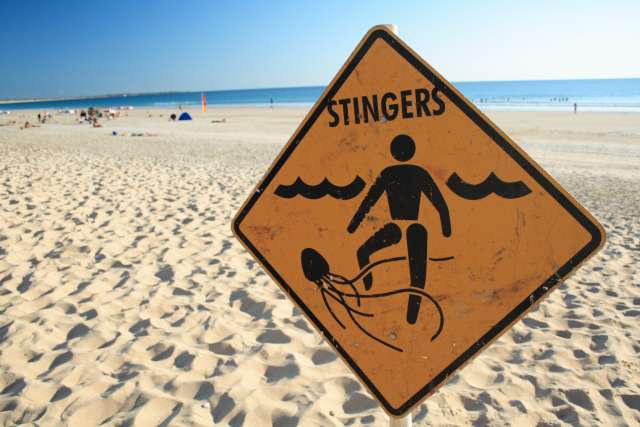Nothing ruins a day at the beach faster than a sting from a jellyfish, stingray or other sea creature. And while you can safely spend plenty of time in the ocean, these stings become more common in certain areas and at certain times of year. In fact, over 150 million people experience jellyfish stings every year worldwide.
If your child runs out of the water with a red welt, chances are they’ve been stung. If you’re going to spend time by the shore and in the water, knowing how to recognize a jellyfish or stingray sting — and how to treat it — is important.
And that old wives’ tale that peeing on a jellyfish sting is the best remedy? It’s really not. Research has found that it doesn’t it help — and it could actually make the sting worse.
Types of stinging sea creatures to watch out for
Jellyfish stings are one of the most common types of bites kids can experience when playing in the ocean. But there are many other kinds of marine animals that can also cause painful stings and bites.
When you and your family are swimming in the ocean and playing on the beach, be on the lookout for:
- Jellyfish
- Stingrays
- Anemones
- Corals
Your children are most likely to get bit or stung by the animals that hang out in warmer, more shallow water. In most cases, these stings happen during accidental contact with the animal. Your child might step on, brush against or just accidentally touch one in passing. That momentary contact is all it takes for a nasty and painful sting.
How to tell if your child got stung
Typically, your child will feel the sting the instant it happens. It may immediately hurt and a raised, red welt may quickly develop.
Other symptoms of a sting from a jellyfish, stingray or other sea animal include:
- Rash
- Swelling
- Itching
- Burning
- Blisters
- Nausea
- Watery eyes or runny nose
Some types of animals are more dangerous. Some even transmit potentially deadly venom with their stings. If your child is stung by one of the more dangerous types of jellyfish or rays, it can lead to serious symptoms that require immediate medical attention.
Call 911 or take your child to the nearest emergency room if they experience:
- Dizziness or headache
- Severe swelling, or swelling of the lips, mouth or tongue
- Trouble swallowing
- muscle spasms
- Difficulty breathing
First aid for jellyfish and other stings
You can effectively treat most minor stings with some quick thinking and a well-stocked beach bag. Jellyfish sting remedies and DIY treatment for other animal stings don’t require a lot of specialized training or supplies.
If your child is stung, the first step is to rinse the sting with sea water (not fresh water) to wash away any venom on the skin surface. But be careful not to rub or scrub the wound as this can further irritate it. Other sting remedies include:
- Rinsing the area with vinegar. Keep a small plastic squeeze bottle filled with vinegar in your beach bag just in case anyone you’re with experiences a sting.
- Gently removing any pieces of tentacles left behind in the wound with tweezers (again, stash a pair in your beach bag just in case).
- Soaking the affected area in warm or cold water to lessen the pain and take away some of the “sting.” An ice pack or warm washcloth could also help.
- Applying hydrocortisone cream or calamine lotion to soothe the sting.
- Asking your health care provider if you should give your child pain relievers or antihistamines after a sting



